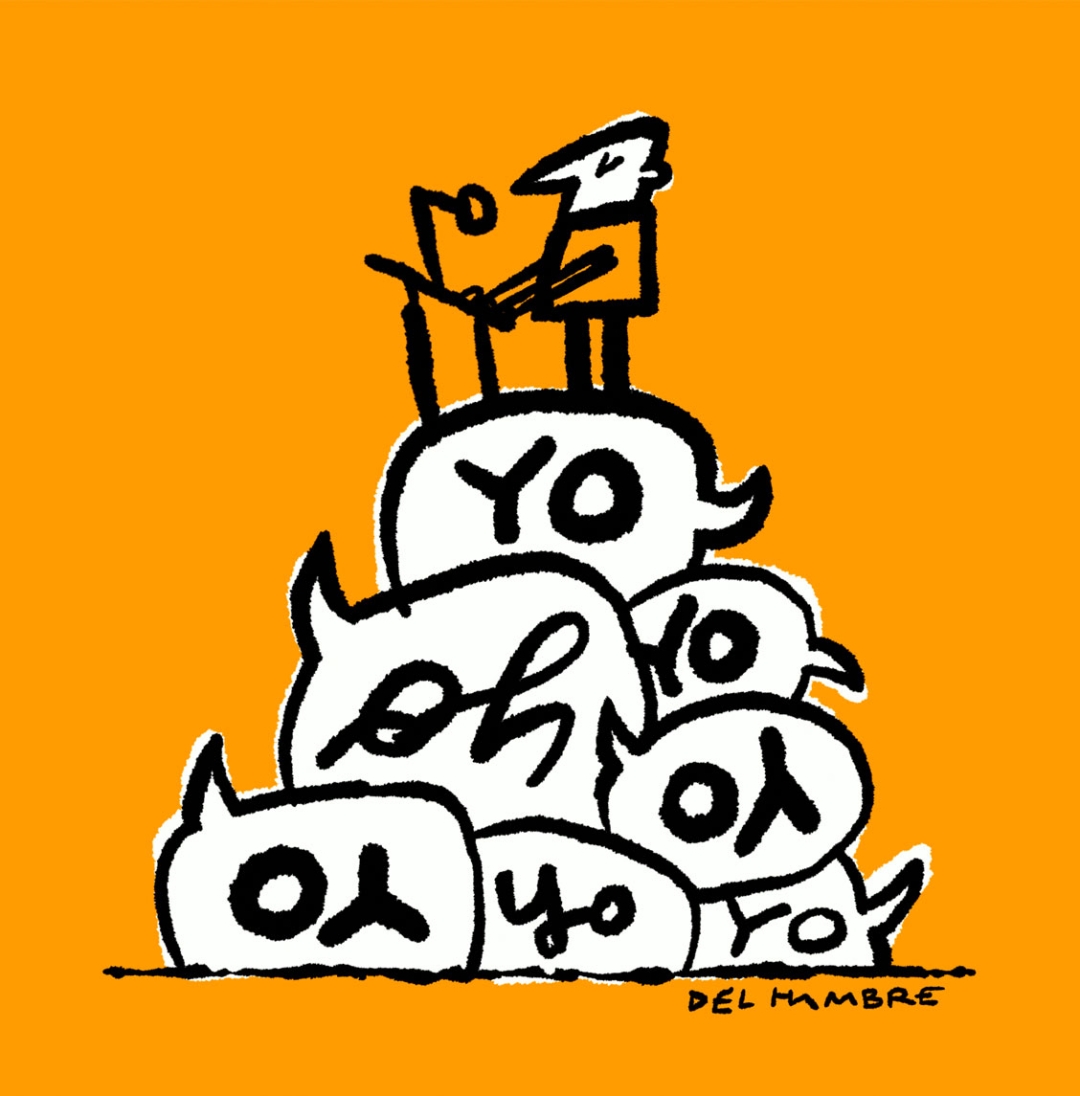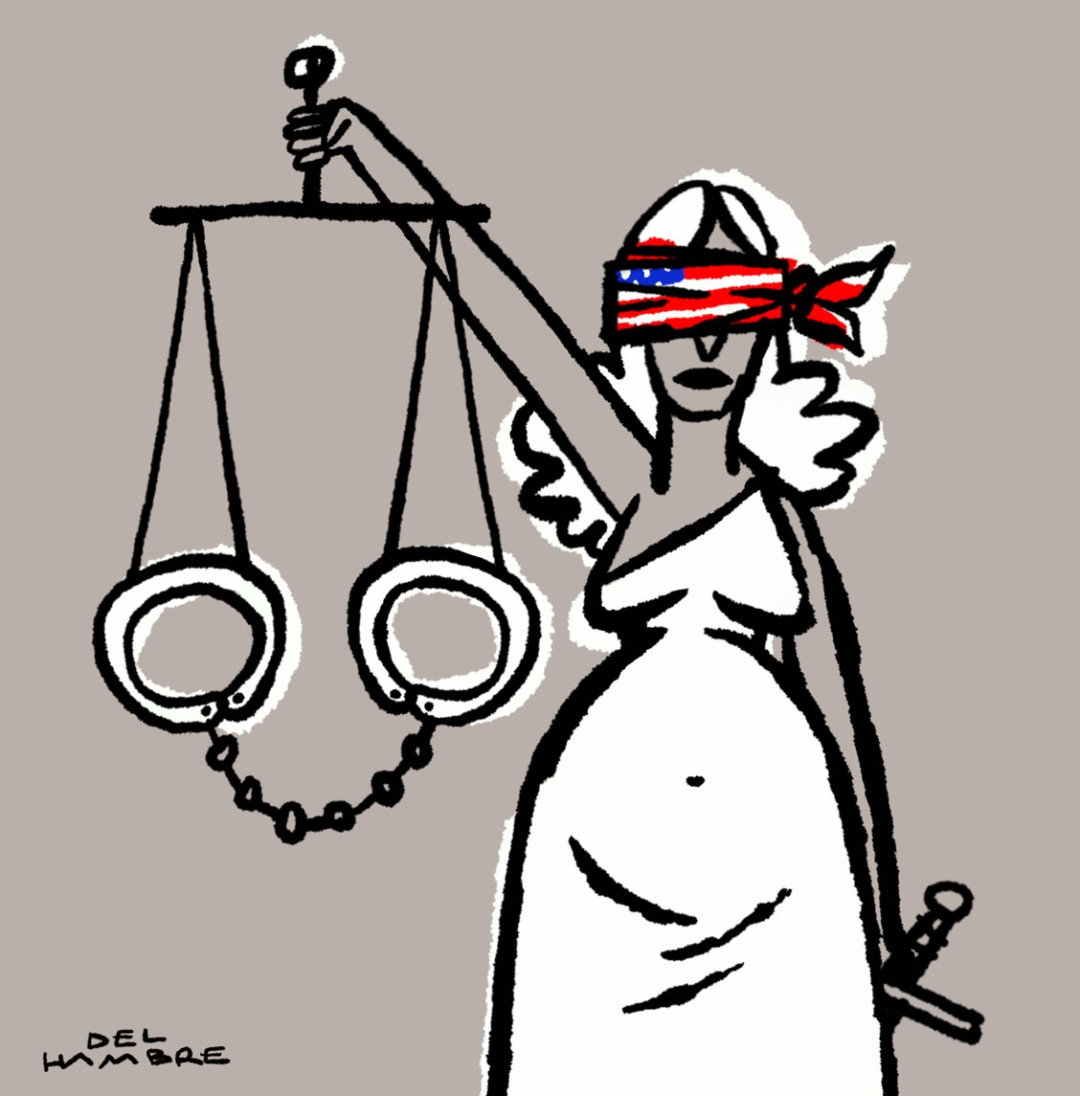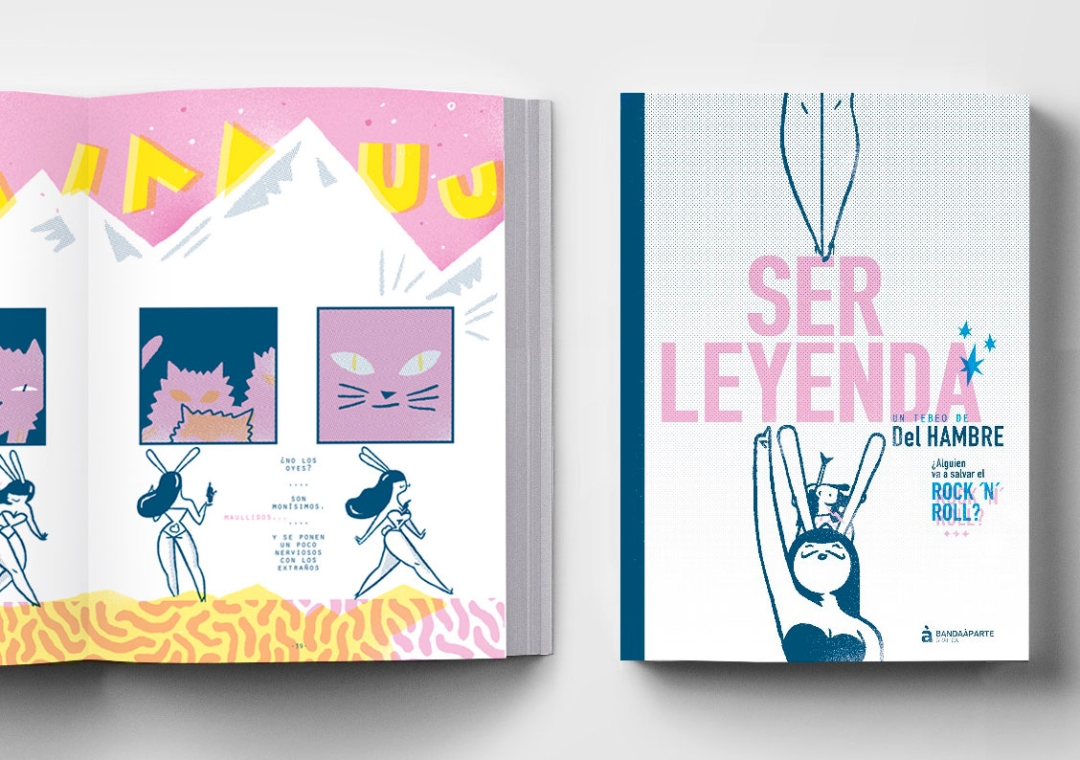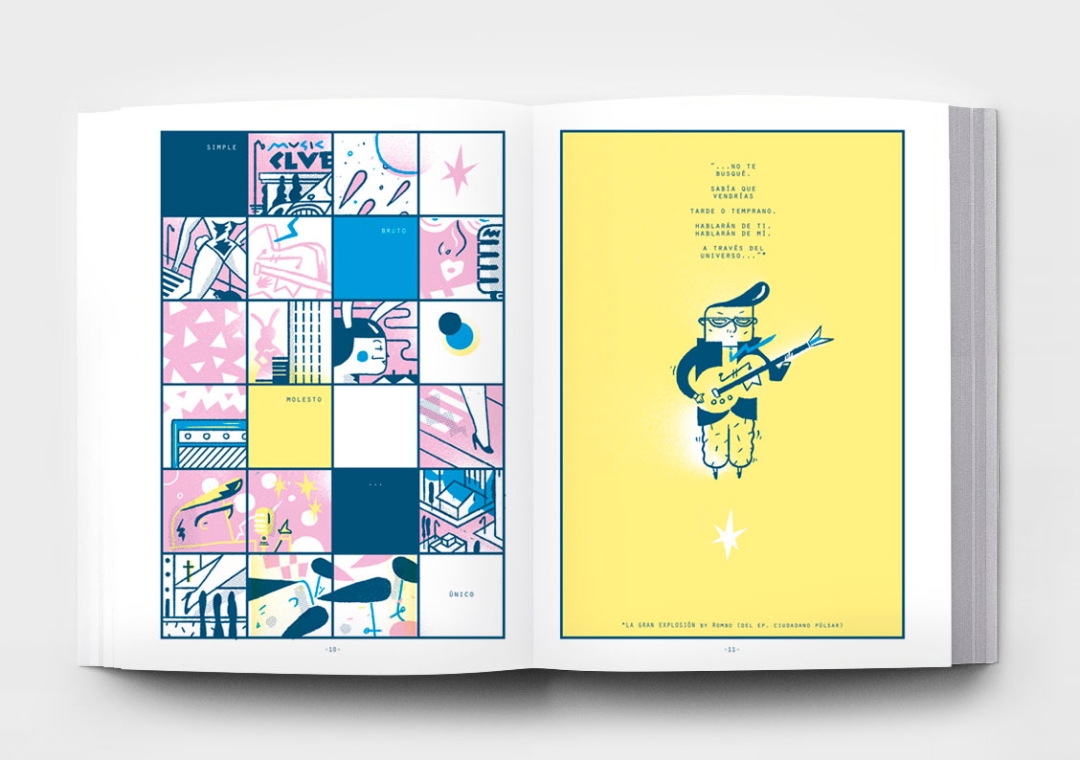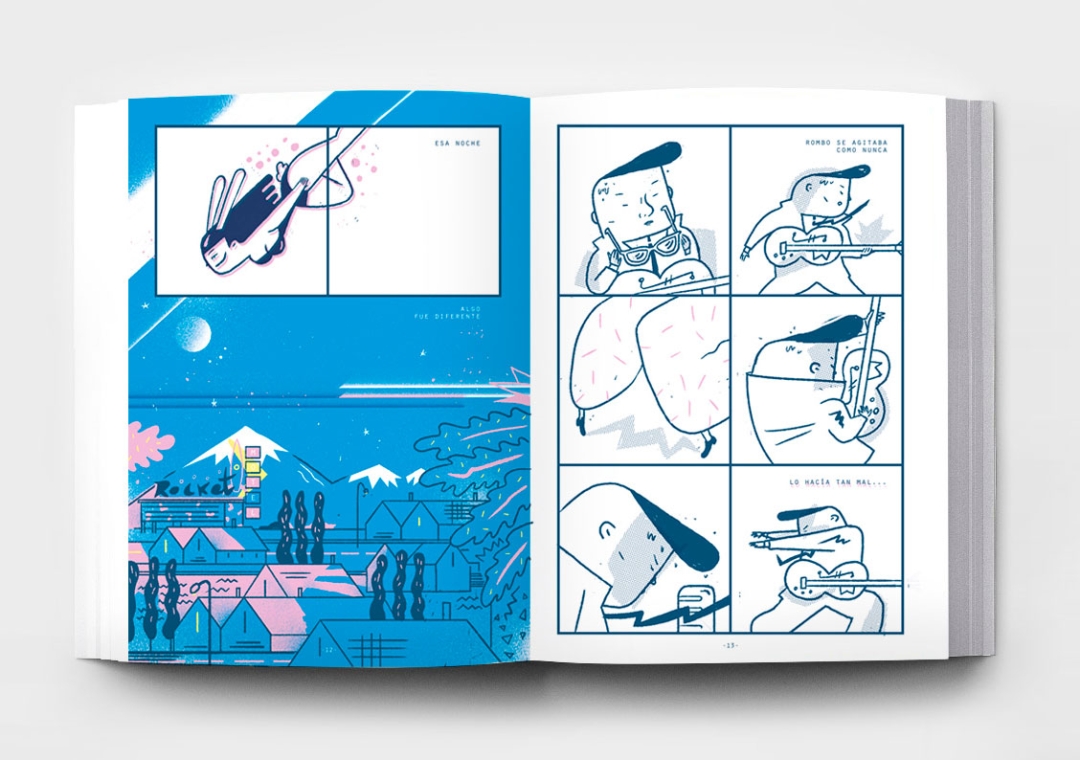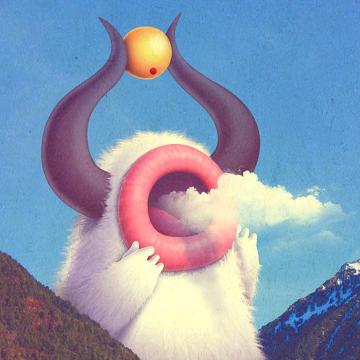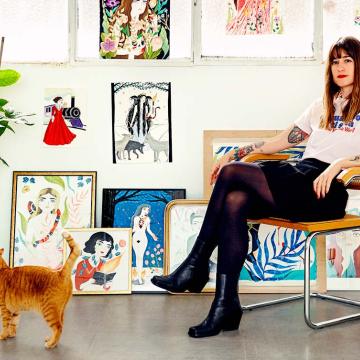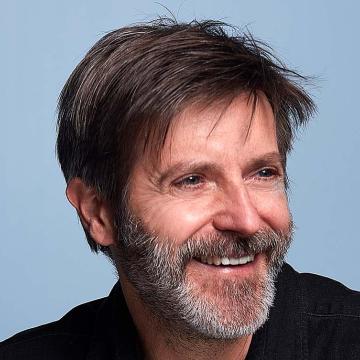Since opening on the 17th of April, Espacio Iberia has welcomed dozens of guests with one thing in common: their infinite talent. Talent that has inspired all the people who have sat there to listen to them.
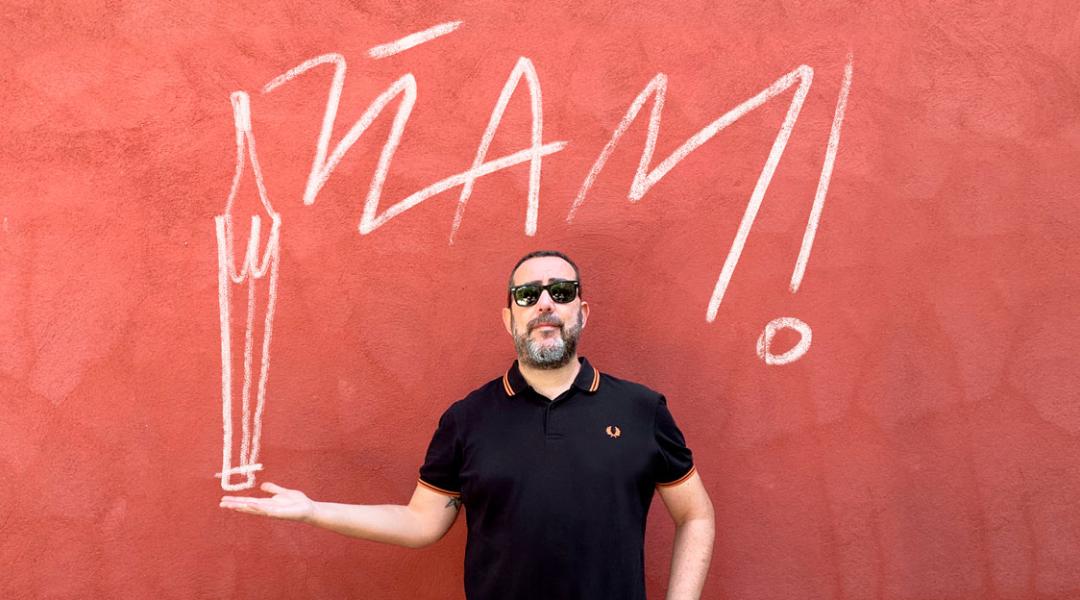
Being an illustrator means more than drawing well, it means conveying an idea or telling a story in the simplest and most direct way possible. This goes beyond style, technique, or aesthetics, according to Del Hambre. His published works, where he assures us he enjoys “complete freedom”, are proof of this and make the investment made by his parents in paper and colouring pencils worth it.
“I’m not sure if an illustrator is born, but they’re definitely made.” Because it has taken Fernando del Hambre (Madrid, 1977), better known simply as Del Hambre, a long time to call himself an illustrator, and he highlights how trivially some people use the term, especially on social media. His illustrations appear in magazines such as Gentleman, Cinemanía, or Forbes and for newspapers like El Mundo, El Correo, or El País —where he currently publishes a weekly comic strip—, he has worked as a creative director for institutions like UNESCO, FAO, or Greenpeace, and in 2019 he published his first graphic novel, Ser Leyenda. All this has made him one of the most clearheaded and versatile illustrators on the national scene.
I can picture you drawing and doodling at a young age, am I right?
Absolutely. I remember lying on the floor in the lounge copying drawings I’d see in comic books, illustrating stories inspired by the films I’d see or creating my own comic strips in notebooks. I could spend hours doing that.
And which illustrators awoke your passion for this world and became an inspiration?
Many. And it still happens today. I see something and think: “If only I could do something like that.” I’ll say that, as a kid, I was crazy about Mort & Phil, Zipi y Zape, Superlópez and all the Spanish comic books. Then, the coarseness of magazines like Cimoc, Comix, Creepy, Metal Hurlant or El Víbora opened the doors to independent European comics and other kinds of stories for me. In any case, my role models are painter Egon Schiele and Saul Steinberg, the mythical illustrator of the New Yorker. They seem like they have nothing to do with each other, but they both have something extremely powerful in common: linework and expressing a lot with very little.
Now your parents see your cartoon strips in El País every week but, at the time, did you struggle to explain to them what you wanted to work as?
Even I didn’t think that someday I would be spending 100% of my time on this. In fact, I didn’t start working exclusively as an illustrator until 2013. To tell you the truth, my father is largely responsible because we used to buy those comic books I used to read as a child second-hand every Sunday in Cuesta de Moyano [Madrid]. I guess that’s where it all started. I think both my parents are happy because the investment they made in paper and colouring pencils at home wasn’t in vain [laughs].
“I think both my parents are happy because the investment they made in paper and colouring pencils at home wasn’t in vain”
In the comic strips in El País, you summarise the content of the article by political scientist Mariam Martínez-Bascuñán. What is that process like?
Quick. In the press, deadlines are always tight, but in this case even more so: I usually receive a draft of the text midday on Friday and my deadline is on Saturday morning. When they offered me the comic strip, they told me that my style was a perfect fit because they were looking for something direct, simple, and with content… Man alive! The challenge is summarising complex topics going easy on the visuals and in a very short period of time. I always try to make my drawings tell a story; I think it’s essential that an illustration isn’t merely aesthetic. For me, that’s what makes all the difference. I try to create a visual metaphor around an easily recognisable graphic element to immediately connect with the reader. If you’re flicking through the newspaper and I make you stop to read the article, my work is done.
When you illustrate for the media, do you feel like your creative freedom suffers?
On the contrary. Drawing for the media is what I love doing the most because it’s precisely where I’ve always felt like I’ve had complete freedom. Normally, when you receive a commission it’s because they’ve seen your work and it fits their concept. At times, even I didn’t know which way an illustration was going in terms of style, and I’ve been lucky enough to get on well with media art directors. They don’t usually take much convincing.
“I always try to make my drawings tell a story; I think it’s essential that an illustration isn’t merely aesthetic”
Ser Leyenda, your leap into graphic novels (or comic books, as the cover says), is a work full of absolute freedom. Tell us about it.
I did it for the pleasure of having a good time. I wanted to make a long comic book and the publishing house Bandaàparte gave me carte blanche. It was a slow job that took me almost three years. I worked on it in between commissions, and it was a way to blow off steam. I drew from my past as a part-time rock star [Del Hambre was intricately connected to music for 15 years] and from weird references to B-movies, sci-fi, lo-fi… Even so, it was still tough. People can’t imagine the number of hours that go into a comic. Everything needs to work perfectly because it can quickly get out of hand. You have to put together a script, develop the characters and scenes, plan and sketch the pages keeping in mind the pace, look up documents and references… Many days you go to bed thinking it’s wonderful, and the next day you wake up and think it’s rubbish… The process was pure rock & roll!
Illustrators are going through a period of great recognition or, at least, of great visibility; how much has social media had to do with this?
Social media has been our portfolio for a very long time. You have to be on them constantly to prove that this is your job. And it’s great to help our work reach a lot of people. But I’m not obsessed with the number of followers I have, I’d rather have less and for them to follow me because they really like what I do or because they’re interested in this world and appreciate it. There are many influencers or content creators who have a lot of visibility, but who aren’t illustrators. It might sound bad, but I take my job really seriously and the word ‘illustrator’ is used very frivolously.
Illustrator, cartoonist, art director; which title do you feel most comfortable with today?
After years of saying it coyly, I feel proud and like to call myself an illustrator, but before that I was an art director.
“The current boom in AI that illustrates is controversial. I’m not worried, an illustrator’s talent can’t be generated with a code”
You also work as a teacher. Can illustration be taught?
We all know how to draw. Some enjoy it more and perhaps are better at it from the get-go, so we spend more time on it, but of course it can be taught, and it can be learnt. It’s not about drawing well, it’s about how to observe and how to tell a story.
Which talents does an illustrator need? And I use the plural form because this goes beyond knowing the technique, right?
Allow me to repeat myself: telling a story is the most important thing. The technique, style, aesthetics… All that must remain in the background. I increasingly find myself spending more time looking for the idea and removing elements that don’t add anything to the story I want to tell. You have to draw a lot and find your imaginary world, but it’s essential to be connected to your reality and, above all, to know how to express it. As well as talent, it’s a question of putting in the hours and being passionate about what you do. That’s more important than a really polished technique. The current boom in AI [Artificial Intelligence] that illustrates is controversial. I’m not worried. What they do can be cool, but there’s no character or substance to them. An illustrator’s gaze and talent can’t be generated with a code.
